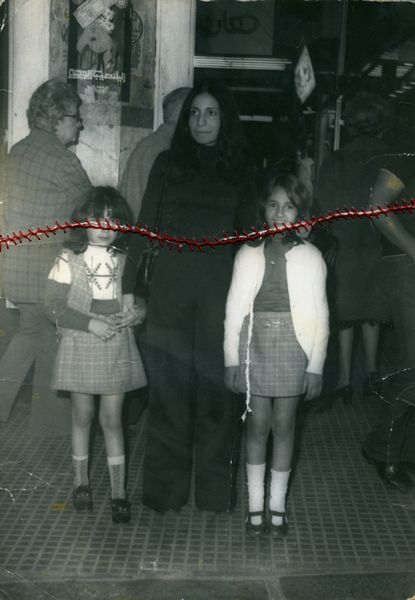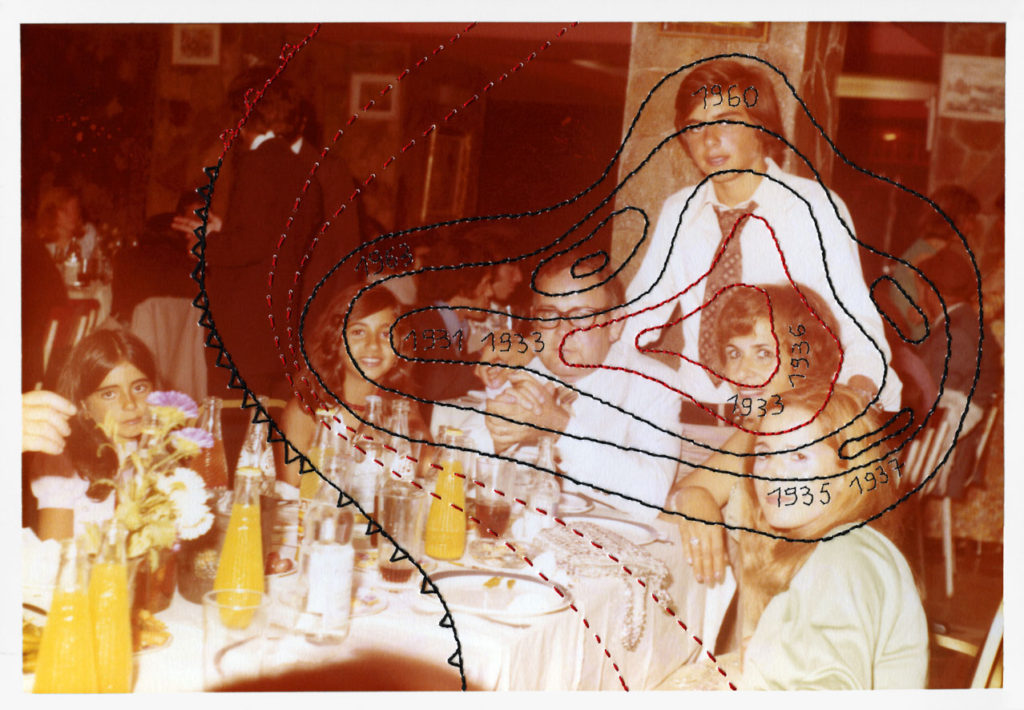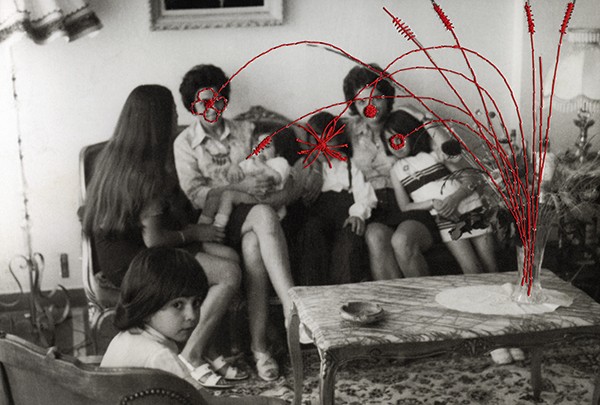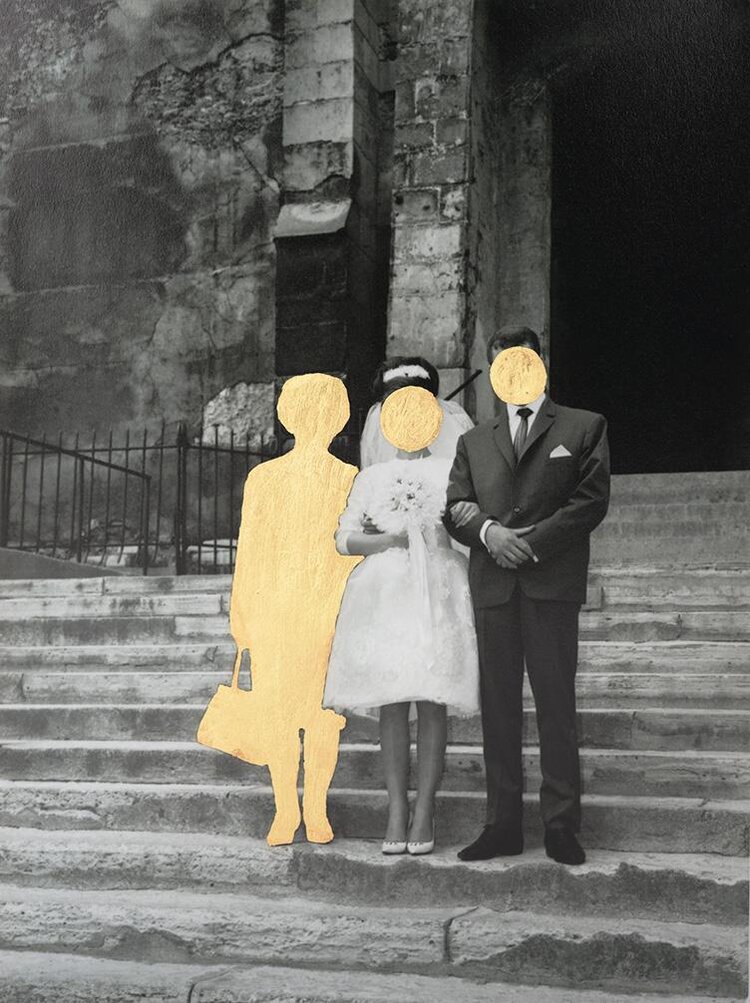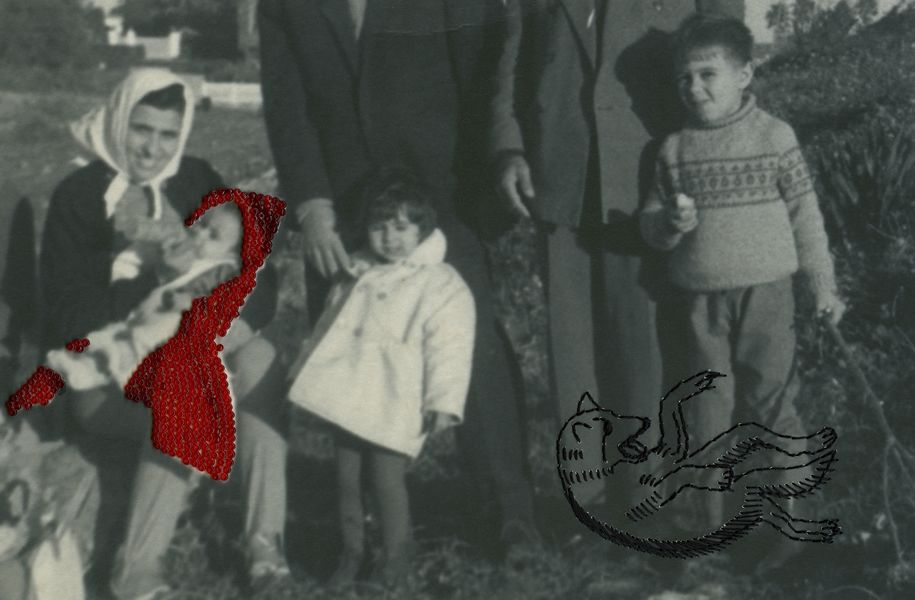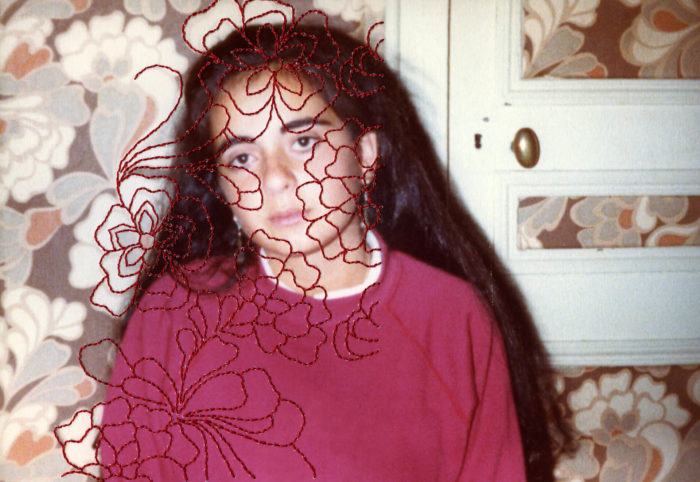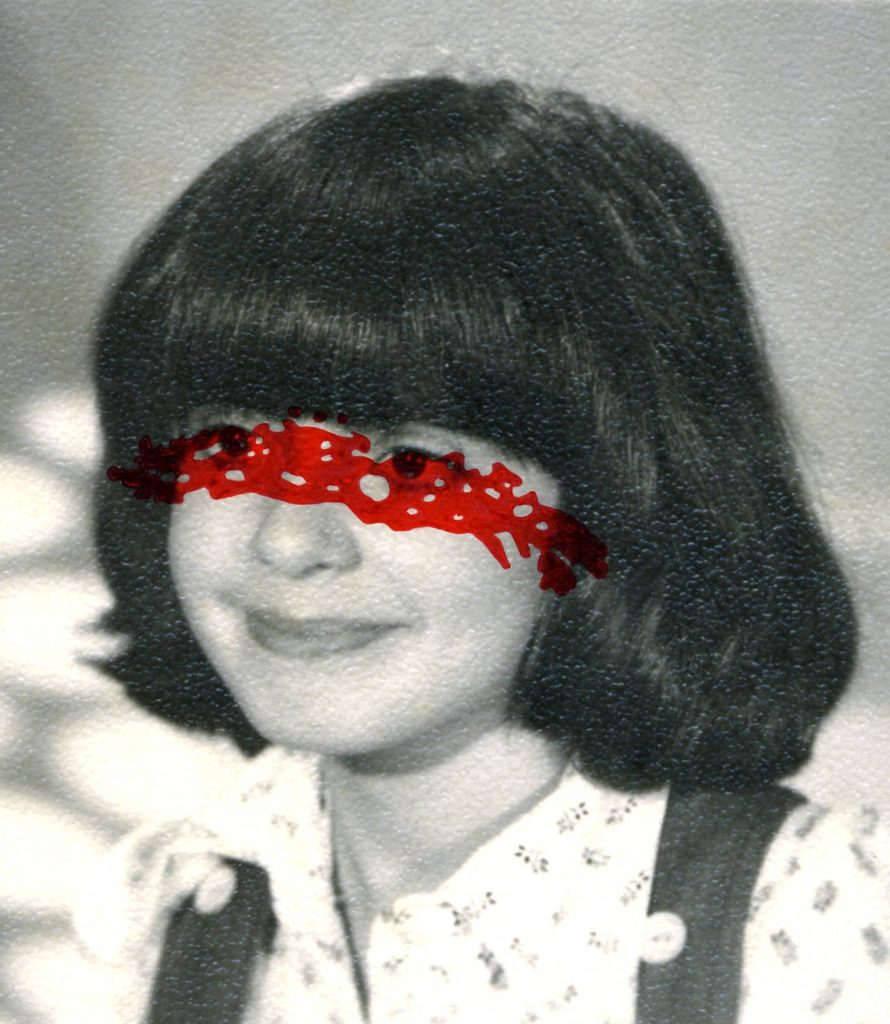Carolle Benitah is a French-Moroccan photographer, born in 1965, who is best known for her multimedia pieces that focus on the theme of identity, Benitah’s in particular, through archived family photographs. With these Benitah utilises the techniques collage, ink drawings and embroidery in order to create her narratives of family history, personal memories, mourning and the passage of time. As well as this, Benitah uses this work as a way to reinterpret her past, stating that she uses “the falsely decorative function of embroidery to create designs that break the images of happiness and deconstruct the myth of the ideal family.”. This look back on the past has also allowed Benitah to understand and establish her current identity in a more defined manner, and gain knowledge of the fears, secrets and memories that helped shape it.
Analysis
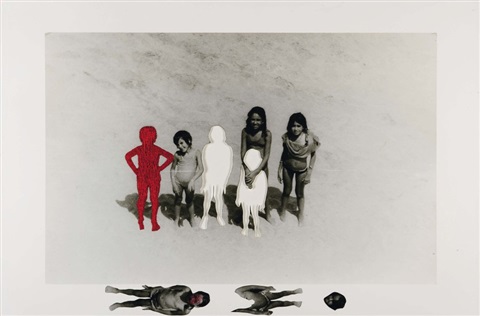
This collage image produced by Carolle Benitah, from her series ‘Photos Souvenirs’, showcases what appears to be an old family portrait of the children, in a beach setting. The composition of the original image places the group of children just off centre, leaving a large amount of empty space around them. This bright, white sand creates a heavy contrasts with the dark, black hair of the children, as well as the strong shadows cast behind them. Due to the vastness of the background there is a lack of leading lines in this photograph. The children are the clear focal point of this image, but in particular the child who had been replaced by a red silhouette is the main point of focus in my opinion. This is due to its bold contrast with the black and white tone of the photograph, bringing in some of the only element of colour this piece has to offer. As well as this, the red cut out section here seems to posses a texture which is different to the one of the photograph. Here Benitah has utilised the border of the photograph as a place to isolate the two children who have been cut out of the family portrait, leaving blurred white empty spaces.
From a technical viewpoint, it is clear to see that the original image was taken with natural light due to its beach settings and the shadows. These shadows can also be an indicator of the time of day in which this was taken, which is most likely around midday, as the shadows are short and close to them. As a result of the large amount of natural light flooding the lens, the ISO setting used when this photograph was taken was most likely low, meaning the image would not be over exposed. In addition to this, it is probable that the shutter speed was on a fast setting due to this as well, as a longer shutter speed would also result in an over exposed image. Due to this brightness of light, the white balance setting used for this photograph would have a mid to high one. This photograph appears to have been taken with a small aperture, as the image is taken far away from the children and they are all still in focus with no blur on the background behind them.
Here Benitah seems to have reinterpreted her family history and presented the truth by removing two of the children out of the frame of the photograph and onto the border, as well as making one completely red. This could be interpreted as a way to foreground the exclusion of these children, possibly by the child in red, as the blurred effect on the blank spaces where the children used to be could imply a sense of uncertainty and anxiousness, contrasting with the bold red and the powerful position the child is stood in. This piece may be highlighting how they might not have been treated as part of the family. This border acting as a frame for the altered image, may also be a way of communicating what is seen as the ideal family, removing any imperfections. This inclusion of the border could also be a way of showing the issues that have been left out of the photo and creating a wider perspective in which the audience are able to see the truth. Furthermore, the angle in which this photo was taken could suggest that the children are viewed as inferior as they are being looked down on, by supposedly the parents or adults that took this photograph. Due to this piece being taken from Benitah’s series ‘Photos Souvenirs’ it may be a depiction of her painful childhood experiences, in which she has chosen to portray the truth which was hidden by the innocence of the original photograph.

